
Fire safety is a critical aspect of workplace safety that can mean the difference between life and death. Every year, workplace fires cause injuries, fatalities, and significant property damage. Understanding fire risks and implementing effective prevention strategies is essential for creating a safe working environment for all employees.

Faulty wiring, overloaded circuits, and damaged electrical equipment are major fire risks. This includes frayed or exposed wires, overloaded power strips or extension cords, outdated or poorly maintained machinery, improperly used or positioned space heaters, and charging stations for multiple devices. Regular electrical safety inspections and proper equipment usage training can significantly reduce these risks.

Faulty wiring, overloaded circuits, and damaged electrical equipment are major fire risks. This includes frayed or exposed wires, overloaded power strips or extension cords, outdated or poorly maintained machinery, improperly used or positioned space heaters, and charging stations for multiple devices. Regular electrical safety inspections and proper equipment usage training can significantly reduce these risks.

Machinery and equipment that generate heat can ignite nearby combustible materials. Examples include industrial ovens and furnaces, welding and cutting equipment, motors and engines, boilers and water heaters, and lighting fixtures (especially halogen lamps). Regular maintenance, proper clearance around equipment, and automatic shut-off features can help mitigate these risks.
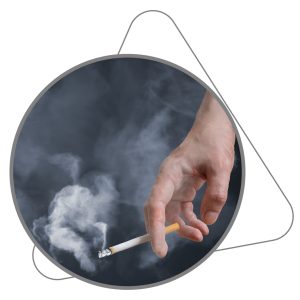
Despite workplace smoking bans, careless smoking remains a fire hazard. Improperly discarded cigarette butts, smoking near flammable materials or in prohibited areas, and malfunctioning or overflowing ashtrays all pose risks. Strict enforcement of smoking policies, designated smoking areas away from buildings, and proper disposal methods for smoking materials are essential.

Deliberate fire-setting poses a significant risk, particularly in retail environments, schools and educational facilities, healthcare settings, and vacant or abandoned properties. Implementing strong security measures, such as surveillance systems, access control, and proper lighting can deter arson attempts.

Identify fire hazards
Systematically inspect your workplace for potential ignition sources, flammable materials, and fuel sources.

Identify people at risk
Consider who might be especially vulnerable in a fire situation, such as disabled employees or visitors unfamiliar with the premises.

Evaluate and act
Assess the risks you have identified and implement measures to remove or reduce them.

Record your findings
Document your risk assessment and the actions taken.

Review and update
Regularly review your assessment, especially after any significant changes to your workplace.

Fire extinguishers are the first line of defence against small fires. Different types are designed for various fire classes (A, B, C, D, K), each suitable for specific types of fires. Class A extinguishers are for ordinary combustibles like wood and paper, while Class B is for flammable liquids. Class C extinguishers are for electrical fires, Class D for combustible metals, and Class K for kitchen fires involving cooking oils and fats.
It is crucial to have the right type of extinguisher for the potential hazards in each area of your workplace. Proper placement throughout the facility ensures quick access in an emergency. Regular maintenance and inspection of fire extinguishers must be undertaken to ensure they function correctly when needed.

Early warning is crucial in fire safety, and a comprehensive fire alarm system is vital. This typically includes smoke detectors, heat detectors, and manual call points, all connected to a central alarm system.
Smoke detectors can identify fires in their early stages, while heat detectors are useful in areas where smoke detectors might cause false alarms. The system should be designed to alert all building occupants and automatically notify emergency services.
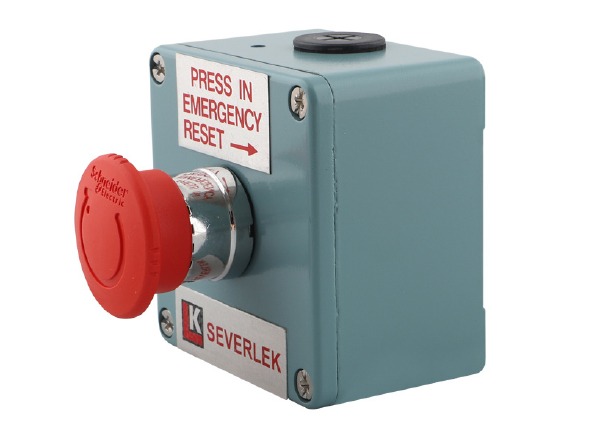
Emergency panic buttons are crucial safety devices in fire protection systems. These latching push button switches, when activated, can immediately sound an alarm or isolate equipment.
Typically, coloured bright red for easy identification, these buttons are strategically placed throughout facilities, providing a quick and accessible means of alerting others to a fire or other dangerous situations. They serve as a vital complement to automated systems, allowing for human-initiated alerts that can trigger faster evacuations and emergency responses, especially when a fire is spotted in its early stages.
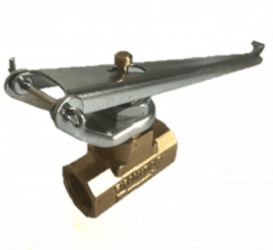
Lever fire valves are compact, versatile devices that can be installed in both horizontal and vertical fuel pipe runs, providing a leak-proof, positive action mechanism for fuel isolation. The valve is typically held open by a tensioned stainless steel cable, which includes a fusible link located near the boiler or other heat-generating equipment. In the event of a fire, this fusible link melts, causing the valve to close automatically and isolate the fuel supply, thereby reducing the risk of fire spread or explosion.

Automatic sprinkler systems are highly effective in controlling fires before they spread. These systems detect heat from a fire and activate to dispense water in the affected area. They can significantly reduce property damage and save lives by controlling or extinguishing fires in their early stages.

Stainless steel free fall fire valves are crucial components in fire protection systems, particularly designed for generators and biomass plant rooms. These versatile valves serve dual purposes, functioning in either cut-off or dump applications to isolate or discharge fuel supplies during emergencies.
Activation occurs through the melting of a fusible link in high temperatures, or they can be connected to optional ancillary items such as manual quick release buttons, panic buttons, or electrical interventions linked to main fire alarms or Building Management Systems. The innovative free-fall linkage design ensures reliable operation by allowing the weight to build momentum before engaging the valve lever.
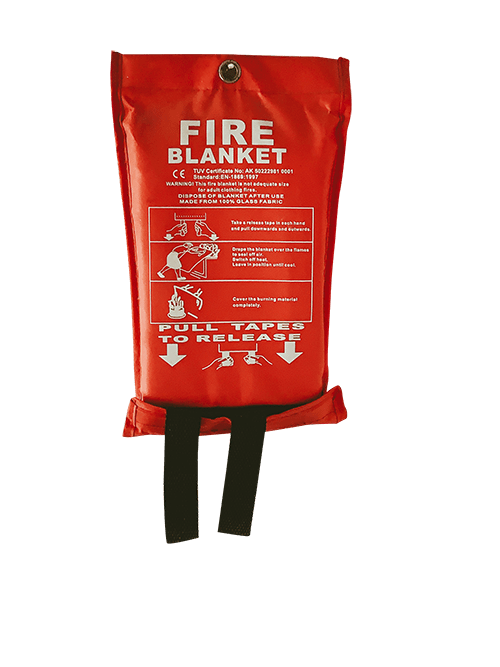
Fire blankets are simple yet effective tools for smothering small fires or wrapping around a person whose clothes have caught fire. They are particularly useful in kitchens, laboratories, and workshops where there is a risk of small fires or clothing ignition. Fire blankets should be easily accessible and staff should be trained in their proper use.
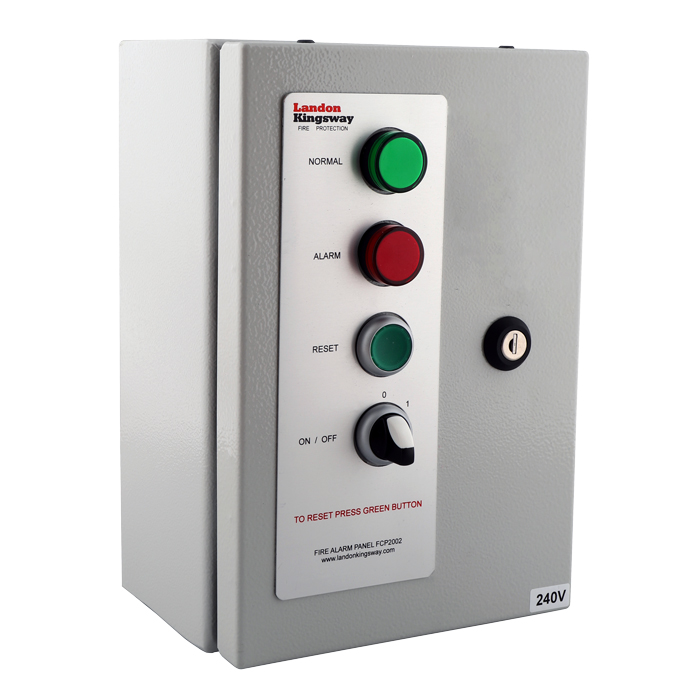
The fire control panel serves as the central hub of a comprehensive fire protection system. This versatile unit acts as the primary control interface, seamlessly integrating various safety devices through a simple loop wiring system. It can connect to an array of sensors including panic buttons, electro-thermal links, and gas detectors, providing a unified monitoring solution.
This centralised approach enhances overall system responsiveness and coordination during fire emergencies, making the fire control panel an indispensable component in modern fire safety infrastructure.

Evacuation plans are critical components of workplace fire safety. These plans should be comprehensive, detailing primary and secondary escape routes from all areas of the building. They must consider the specific layout of the workplace, potential obstacles, and the needs of all employees, including those with disabilities or mobility issues.

Fire drills are practical exercises that put evacuation plans to the test and help employees familiarise themselves with emergency procedures. These drills should be conducted at least annually, though more frequent drills may be necessary in high-risk environments or where there is high staff turnover.

Fire wardens play a crucial role in implementing fire safety procedures. These designated employees receive specialised training to assist in fire emergencies. Their responsibilities typically include guiding colleagues during evacuations, performing sweeps to ensure all areas are clear, and liaising with emergency services upon their arrival.

Training employees on the proper use of fire safety equipment is crucial. This includes hands-on training with fire extinguishers, allowing employees to feel comfortable with their weight and operation. Employees should understand the different types of fire extinguishers and which are appropriate for different classes of fires.
Regular inspections are the cornerstone of an effective fire safety maintenance program. These inspections should be conducted on a scheduled basis, varying in frequency depending on the equipment and local regulations.
For example, fire extinguishers might require monthly visual inspections to ensure they are present, unobstructed, and appear to be in good condition. Fire alarm systems may need weekly tests of manual call points on a rotating basis. Emergency lighting systems often require monthly function tests.
While regular in-house inspections are crucial, professional servicing is equally important to ensure all fire safety systems are functioning optimally. Professional technicians have the expertise and equipment to conduct more thorough examinations and maintenance procedures that go beyond visual inspections.
Maintaining detailed records of all fire safety system inspections, maintenance, and servicing activities is not just good practice – it is often a legal requirement. These records serve multiple purposes: they provide evidence of compliance with regulations, help track the history of equipment performance, and can identify patterns that might indicate recurring issues.
Implementing a comprehensive fire safety strategy is not just a legal requirement but a moral obligation to protect lives and property. By identifying risks, installing appropriate safety equipment, and ensuring all employees are well-trained, workplaces can significantly reduce the risk of fire-related incidents.
Landon Kingsway is a UK provider with a global reputation for quality and innovation. We have been providing fire protection and hazardous gas detection equipment for commercial and industrial buildings including boiler house and plant rooms for over 60 years.
Ensure your workplace has the correct fire protection measures in place. Our experts can provide a comprehensive fire safety assessment of your premises. Call now on 0121 327 7881 or contact us through our website.